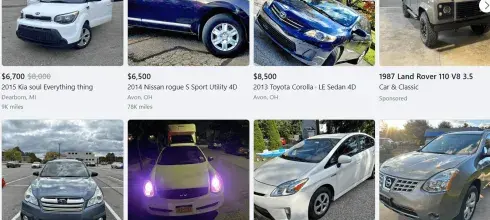
How Does the Weather Affect Auto Transport? All You Need to Know
In the auto transport world, guaranteeing a delivery date is very difficult. There are so many variables, and that is why you’re usually given a window of time instead. Reliable car shipping companies work very hard to stick to a schedule, but one particular variable, the weather, can be very unpredictable.
The United States is a vast country, with a variety of climates within each region. For example, one part of the country may experience hurricanes, while another may be more likely to have blizzards. The weather is something you should take into consideration, especially if you’re relocating from one coast to another and want to ship a car.
If you’d like to know the answer to the question, “How does weather affect transportation?” This post has all the answers and more.
Severe weather conditions that are possible
Severe weather conditions can wreak havoc on unsuspecting auto transport carriers and their customers. The worse the weather, the harder it is to move anything across the country. So, what kind of weather can affect the auto transport process?
- Lake effect snows and other winter weather: Winter weather can hit just about anywhere, from the Pacific Northwest to the steppes of Utah to the balmy subtropics of the southeast. When people aren’t prepared for the weather, or don’t know how to handle it, bad things happen on the road. Snow and ice are particularly bad news for drivers, especially car transportation drivers.
- Hurricanes and tropical storms: Hurricanes and tropical storms are somewhat easy to prepare for. When they’re caught early, most people in their path will have time to prepare or even evacuate if necessary. Technology can be used to inform auto transport carriers on whether they want to go into an area that’s about to get hit by a hurricane. They can also incorporate such information into their route planning.
- Flash floods: Flash floods aren’t necessarily weather, but they are the consequences of severe weather. They often follow periods of heavy rainfall and are not very predictable, which means carriers have a harder time preparing for them.
- Wildfires: Wildfires are also a weather-related issue. They are a big problem in the western US. Carriers tend to stay far away from wildfires. California’s wildfire season can see hundreds of shipments delayed or even turned down because of the fires.
Some of the ways safe car shipping can be impacted by the weather
All the weather conditions mentioned above impact the auto transport process in several ways and determine the best time to ship a car.
Rise in cost
Car shipping rates tend to be higher at times of the year when the weather is expected to be the worst. Car shipping rates primarily depend on the particular location and expected route, however, if the weather prevents the driver from taking the original route, they have to find an alternative route to take. This has the potential to affect the pick-up of other vehicles as well as lead to additional fuel costs and longer transport time.
Additionally, winter is the season for snow and ice. It is also the snowbird season and the time of many holidays. These could cause increased traffic on the highways and impact car shipping even further.
There’s also the problem that many drivers choose not to drive a particularly dangerous route, meaning there’s less of a supply of suitable carriers. The laws of supply and demand can drive up prices, depending on how many people need safe car shipping.
Major delays
When unexpected weather hits, roadways can get shut down and more accidents can occur. Drivers may also be forced to drive much slower. If you need your vehicle shipped immediately or super quick, this can cause major logistical headaches. What might typically take just a few days, could take longer than a week.
Sometimes, if it’s a particularly bad storm, such as a major blizzard or hurricane, carriers might choose not to drive at all, preferring to wait it out. This is perfectly understandable and the sign of a safe car auto transport provider. They don’t want to put the driver at risk and to reduce the chance of any vehicles getting damaged.
Vehicle damage
When the weather is really bad, depending on the method of transportation that you choose, there is a very small chance that your vehicle can suffer some minor damage.
At this point, we should mention the difference between enclosed vs. open auto transport. If you choose an enclosed trailer, your car will be completely protected from all the elements, including rain, hail, sleet, and various types of debris that might hit your vehicle at high speeds if it happens to be very windy.
Choose an open trailer, and you’ll be taking more of a chance. It’s best to choose an open trailer if the route and time of the year is not prone to bad weather.
If your car is especially valuable, classic, or unique, you should always choose the enclosed auto transport option. It costs a little bit more, around 30%, but it’s well-worth the added expense because you can be certain your vehicle is provided the most protection possible.
How to lessen the impact and get safe car auto transport
Now you know how the weather can impact the transportation of your vehicle, you might be wondering whether there’s anything you can do about it. Of course you can’t change the weather, but there are a few things you can do to lessen its impact.
Research the weather
Before you make the arrangements to ship your car, find out what the weather is like in the region where you want to ship it. Research when the best time to ship a car is and if you can wait until then it would be ideal.
- Wintry weather: The northeastern part of the United States has the greatest risk of snow. This area includes New York, Pennsylvania, Michigan, Ohio, and Maine. Some parts of the country experience snow as early as October and as late as April.
- Hurricane season: This type of storm is most common on the Atlantic coast of the United States. Hurricane season runs from June to November.
Choose the right time of year
If possible, try to avoid shipping your vehicle during months that are prone to bad weather. For instance, you might avoid shipping a car up north during the winter or avoid shipping a car to the Gulf Coast during hurricane season. If you can wait until after these treacherous months are over, it would be ideal.
Decide between open and enclosed car shipping
Open and enclosed car shipping are the two primary shipping methods. For most situations, open auto transport is more than adequate. However, the time of the year and the type of vehicle you want to ship will determine which shipping method is best.
Summer vs. winter car shipping: When is the best time to ship a car cross country?
The time of year and weather affect the process of shipping your vehicle. In this section, we’ll explain the difference between shipping in the summer and winter. We’ll also look at what you should expect and how best to prepare.
Shipping during the winter
If you’re looking for a low price to ship your vehicle, winter is the time to do it. Let’s face it there’s not much else to look forward to during the winter months.
Prices are low because demand is also low during the winter which means carriers have more open spaces on their trailers. These open spaces need to be filled, which creates competition between carriers.
Most cars will still be delivered on time during the winter, however, weather related delays are more likely. Even though it might take a little longer, auto transport is still much safer than driving it yourself.
Shipping during the summer
Carriers are able to operate much more efficiently during the warmer months. There is less severe and unpredictable weather taking place. Shipping your vehicle in the summer will be slightly more expensive, due to the increased demand. However, you might get your vehicle delivered sooner than expected because vehicles are loaded and unloaded faster.
How to prepare your car for shipping in the winter and summer seasons
Have you ever heard the saying, “By failing to prepare, you’re preparing to fail.”? There are lots of things you can do to prepare for an upcoming auto transport service.
For example, make sure your radiator is topped off to ensure your vehicle’s cooling system does not freeze in the cold season or overheat in the summer season.
Remember to adjust the tire pressure for the temperatures that are expected at its final destination. Tires lose or gain 1 PSI per 10 degree temperature change.
Something else to keep in mind is that shipping your vehicle in the winter season using an open trailer will leave your vehicle exposed to sand, salt, ice melt, and dirty snow. These are not ideal if you want to ship a valuable or classic car.
Want to learn more about vehicle shipping? Get answers to your questions here.
If you’re ready to make your auto transport arrangements, please give us a call at (864) 546-5038 or use our Live Chat option.







